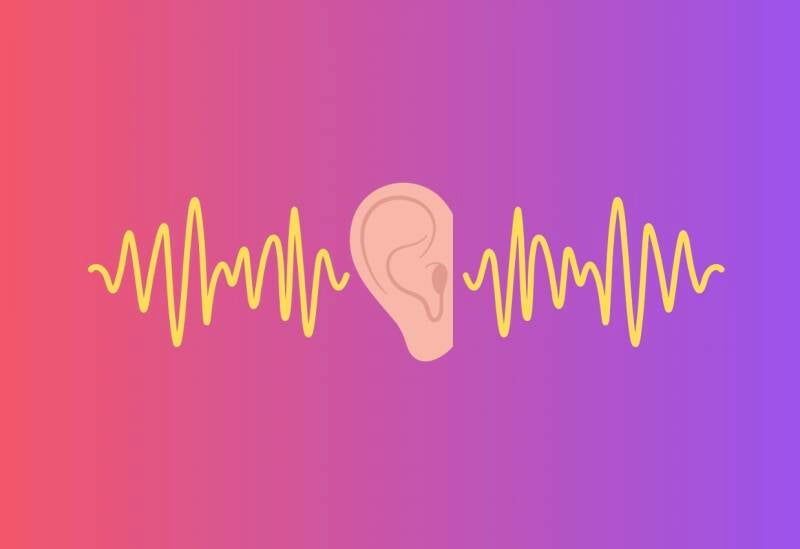Tinnitus isn't a disease; it's a symptom, a kind of phantom sound the brain generates. Because it's different for everyone, finding the right way to manage it is a journey. Here are five of the most promising and commonly used treatments available today.

1. Sound Therapy: The Art of Distraction
Sound therapy is often the first, and one of the most effective, tools people use to manage their tinnitus. The goal here isn't to simply drown out the internal sound, but to gently change how your brain reacts to it.
How It Works:
Think of your brain as a volume control. When you first notice tinnitus, your brain labels it as important, dangerous, or annoying, and cranks up the volume. Sound therapy introduces a soft, low-level sound (like white noise, nature sounds, or static) into your environment. This external sound serves two purposes:
-
Enrichment: It reduces the contrast between the environment and the internal ringing, so the tinnitus isn't so jarringly noticeable.
-
Habituation: By providing a continuous, neutral soundscape, your brain eventually decides the background noise (both the external sound and your tinnitus) isn't important. Over time, your brain "filters it out," a process called habituation, and you simply stop noticing the ringing.
You don't need fancy equipment to start. Using a fan, a dedicated sleep sound machine, or even a specialized smartphone app can make a huge difference, especially when you're trying to sleep or relax in a quiet room.
2. Tinnitus Retraining Therapy (TRT): The Brain's Reset Button
Tinnitus Retraining Therapy is a highly effective, structured approach that focuses on long-term relief. TRT is not a quick fix; it usually takes 12 to 24 months, but the results can be life-changing.
How It Works:
TRT has two main parts, and both are necessary:
-
Educational Counseling: This is the most crucial part. A professional counselor helps you understand why you hear the tinnitus and, more importantly, why your brain is reacting so negatively to it. By understanding that the sound is harmless, you strip away the fear, anxiety, and frustration attached to the noise.
-
Low-Level Sound Therapy: Similar to the above, you use small sound generators (often worn like hearing aids) to introduce a continuous, barely audible noise. This combined approach teaches your auditory system to reclassify the tinnitus as neutral, pushing it into the background permanently.
TRT is successful because it tackles both the sound and the emotional reaction to the sound.
3. Cognitive Behavioral Therapy (CBT) and Mindfulness
When tinnitus is severe, it can dramatically impact your mood, sleep, and concentration. You might start to dread quiet spaces, or the ringing might trigger feelings of anxiety. This is where therapy focused on mental health can be incredibly powerful.
How It Works:
CBT is a type of talk therapy that helps you change the negative thought patterns associated with your tinnitus. For example, if your thought is, "This ringing is ruining my life," a CBT therapist helps you reframe that to, "This is an annoyance, but I can choose to focus on something else right now." It's about changing your relationship with the sound.
Mindfulness practices involve non-judgmentally accepting the present moment, including the tinnitus. By practicing mindful breathing or observation, you learn that you are more than the sound in your head, making the ringing less of a threat and reducing its emotional impact. These methods don't treat the sound itself, but they are essential for treating the distress it causes.
4. Hearing Aids and Combination Devices
A very common cause of tinnitus is hearing loss. When your ears can't pick up external sounds, your brain sometimes fills in the missing auditory information with its own sound—tinnitus.
How It Works:
-
Hearing Aids: If you have hearing loss, simply wearing a hearing aid to amplify the outside world can make the tinnitus much less noticeable. By receiving the sound signals they were missing, the brain has less need to generate the phantom ringing.
-
Combination Devices: Many modern hearing aids are specifically designed for people with tinnitus. They combine traditional sound amplification (to help with hearing) with built-in sound generators that play personalized background noise (for sound therapy). This two-in-one approach is highly convenient and often very effective.
If you suspect you have any degree of hearing loss, getting a hearing test is a necessary first step.
5. Medication and Alternative Treatments
While there is no pill designed specifically to "cure" tinnitus, certain medications can be used to treat the symptoms associated with it, such as anxiety or sleep disturbance, which in turn can make the tinnitus feel less severe.
What to Know:
-
Anxiety/Sleep Medications: If tinnitus severely prevents you from sleeping or causes high anxiety, a doctor may prescribe medication to help manage those secondary symptoms. Better sleep and lower anxiety almost always lead to the tinnitus being less bothersome.
-
Supplements and Lifestyle: Though evidence is limited, some people report improvements with certain supplements (like Magnesium or Zinc, if they are deficient). More reliably, managing lifestyle factors like stress, caffeine, and loud noise exposure can be a form of treatment. When you protect your ears from loud environments (using earplugs at concerts, for instance), you are actively treating the condition by preventing it from worsening.
Moving Forward
The most important takeaway is that you have options. Dealing with tinnitus is a personal process, and a successful treatment plan often involves combining these methods—perhaps sound therapy with CBT, or a hearing aid combined with mindfulness.
The best place to start is always with a professional evaluation by an audiologist or an Ear, Nose, and Throat (ENT) doctor. They can help you figure out what might be causing your unique noise and recommend the starting point for your journey to quiet.